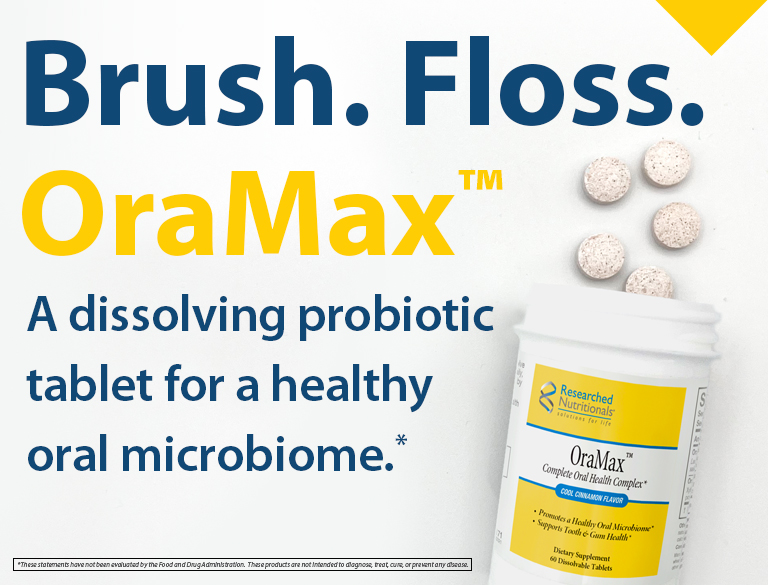…article continued:
IgG 1-3, Chronic Inflammation, and Complement Activation
The complement system is an important part of the innate immune system. Complement is a group of plasma and membrane-associated serum proteins that contribute to the local inflammatory response to antigens such as pathogens, damaged tissue, or foreign environmental proteins.3 Only IgG 1-3 can activate complement; once activated, the complement pathway produces anaphylotoxins – smaller molecules that promote inflammation, vascular permeability, and inflammatory white blood cell responses. Anaphylotoxins can trigger inflammatory responses from both mast cells and basophils.11 Sustained activation of the complement system can result in a loss of tolerance and can contribute to chronic inflammation.12 Over time, sustained activation of complement can increase the risk of autoimmunity.
In contrast, IgG4 does not activate complement or participate in chronic, complement-mediated, inflammatory reactions. Instead, IgG4 can prevent such reactions by blocking white blood cell receptors stimulated by other IgE or IgG subclasses, by binding antigen in circulation, or through the inhibition of immune complex precipitation into joints or tissues.3
Allergy, Sensitivity, or Tolerance – What to Measure?
Human studies have demonstrated that IgE and IgG4 trend together in adults, and that IgG4 levels tend to be higher in those with atopic (allergic) IgE-mediated diseases.13 This makes IgG4 an acceptable stand-in for IgE, as foods or aeroallergens with high IgG4 levels likely indicate the presence of an IgE-mediated type I hypersensitivity (classical “allergy”).14
This knowledge then creates a dilemma for clinicians trying to interpret total IgG (totIgG) results. There is no way to discern from totIgG which high values are driven by inflammatory IgG1, IgG2, or IgG3 and there is no way to determine which totIgG values are elevated due to the presence of IgG4 blocking antibodies. IgG-mediated food antibodies commonly decrease when foods are eliminated, and many clinicians attempt food reintroductions after eliminating a food and “resting” the immune system from the antigen exposure for a period of time.15,16 Since all of the IgG subclasses can be tested in either a serum or dried blood spot (fingerstick) format, it is a simple matter to run a separate test for IgG4 and IgG 1-3 when testing a sample.
When food testing is performed, it may not be appropriate to rotate or attempt the re-introduction of a food known to be IgE/IgG4-mediated, since the re-introduction may result in inflammatory symptoms or an anaphylactic reaction.17 But, if only totIgG is measured, there is no way to know which foods are safe for attempted re-introduction (Figure 1).18 It may also be imperative to remove or manage environmental IgE-mediated exposures to minimize the risk of food cross-reactions or type I hypersensitivity reactions to pollens, molds, pets, etc.16,19,20

The risk in re-introducing a food with a high IgG4 value lies in the fact that IgG levels can be variable.21 Depending upon inheritance, nutritional status, infection, comorbid diseases, or medical interventions, IgG levels may not be consistent or reliable and acquired IgG deficiency may occur at any time.22,23 Acquired IgG deficiency may decrease IgG subclass levels, including protective IgG4 to the point where IgE blocking is no longer possible. The loss of protective IgG4 makes type I IgE-mediated symptoms, including anaphylaxis, much more likely with additional antigen exposures, such as food re-introduction or seasonal exposures.24
Conclusion
An improved understanding of the inter-relationship between various IgG immunoglobulin subclasses and IgE highlights the necessity of separate assessments for IgG subclasses 1-3 and IgG4. If IgE-mediated allergens are incorrectly assumed to be IgG-mediated, then the measurement of total IgG can increase the risk of IgE-driven symptoms during food reintroduction, up to and including life-threatening anaphylactic reactions. Clinicians using IgG testing for food or aero-allergen (inhalant) sensitivity must be aware of the clinically relevant difference between IgG 1-3 and IgG4. With this increased awareness the measurement of IgG4 independently from the other IgG subclasses shall become the standard of care to correctly determine the proper treatment path for each antigen and each patient.
References
- Virdee K, et al. Food-specific IgG Antibody-guided Elimination Diets Followed by Resolution of Asthma Symptoms and Reduction in Pharmacological Interventions in Two Patients: A Case Report. Glob Adv Health Med. 2015;4(1):62-66.
- Piuri G, Ferrazzi E, Speciani AF. Blind Analysis of Food-Related IgG Identifies Five Possible Nutritional Clusters for the Italian Population: Future Implications for Pregnancy and Lactation. Nutrients. 2019;11(5):1096.
- Scott-Taylor TH, et al. Immunoglobulin G; structure and functional implications of different subclass modifications in initiation and resolution of allergy. Immun Inflamm Dis. 2018;6(1):13-33.
- Vidarsson G, Dekkers G, Rispens T. IgG subclasses and allotypes: from structure to effector functions. Front Immunol. 2014;5:520.
- Vaillaint AAJ, Vashisht R, Zito PM. (2020) Immediate Hypersensitivity Reactions. StatPearls Publishing, Treasure Island, FL. https://www.ncbi.nlm.nih.gov/books/NBK513315/ Accessed 20 Aug 2020.
- Valenta R, et al. Food allergies: the basics. Gastroenterology. 2015;148(6):1120-31.e4.
- Ayass MA, Jabeen A, Nowshad G. Prevalence and Correlates of Immunoglobulin IgA Deficiency in Adult Outpatient Population. J. Allergy Clin. Immunol. Feb 2015;135(2); Supp AB93.
- Gocki J, Bartuzi Z. Role of immunoglobulin G antibodies in diagnosis of food allergy. Postepy Dermatol Alergol. 2016;33(4):253-256.
- Janeway CA Jr, et al. (2001) Immunobiology: The Immune System in Health and Disease, 5th edition. Garland Science, New York.
- Usman N, Annamaraju P. (2020) Type III Hypersensitivity Reaction. StatPearls Publishing, Treasure Island, FL. https://www.ncbi.nlm.nih.gov/books/NBK559122/ Accessed 20 August 2020.
- Dunkelberger J, Song W. Complement and its role in innate and adaptive immune responses. Cell Res. Dec 2009;20;34–50.
- Markiewski MM, Lambris JD. The role of complement in inflammatory diseases from behind the scenes into the spotlight. Am J Pathol. 2007;171(3):715-727.
- Carballo I, et al. Serum Concentrations of IgG4 in the Spanish Adult Population: Relationship with Age, Gender, and Atopy. PLoS One. 2016;11(2):e0149330.
- Smoldovskaya O, et al. Allergen-specific IgE and IgG4 patterns among patients with different allergic diseases. World Allergy Organ J. 2018;11(1):35.
- Neuendorf R, et al. Impact of Food Immunoglobulin G-Based Elimination Diet on Subsequent Food Immunoglobulin G and Quality of Life in Overweight/Obese Adults. J Altern Complement Med. Feb 2019; 25(2):241-248.
- Popescu FD. Cross-reactivity between aeroallergens and food allergens. World J Methodol. 2015;5(2):31-50.
- Hourihane JO, Knulst AC. Thresholds of allergenic proteins in foods. Toxicol Appl Pharmacol. 2005;207(2 Suppl):152-156.
- Versluis A, et al. Reintroduction failure after negative food challenges in adults is common and mainly due to atypical symptoms. Clin Exp Allergy. 2020;50(4):479-486.
- Gautier C, Charpin D. Environmental triggers and avoidance in the management of asthma. Journal of Asthma and Allergy. 2017;10:47-56.
- Geroldinger-Simic M, et al. Birch pollen-related food allergy: clinical aspects and the role of allergen-specific IgE and IgG4 antibodies. J Allergy Clin Immunol. 2011;127(3):616-22.e1.
- Agarwal S, Cunningham-Rundles C. Assessment and clinical interpretation of reduced IgG values. Ann Allergy Asthma Immunol. 2007;99(3):281-283.
- Faria A, et al. Food components and the immune system: from tonic agents to allergens. Front Immunol. 2013;4: 102.
- Anogeianaki A, et al. Vitamins and mast cells. Int J Immunopathol Pharmacol. 2010;23(4):991-996.
- Burnett M, et al. Relationship of dog- and cat-specific IgE and IgG4 levels to allergic symptoms on pet exposure. J Allergy Clin Immunol: In Practice. 2013;1:350-3.
Andrea Gruszecki, ND, received her BA in ecology and evolutionary biology from the University of Connecticut, where she was exposed to a variety of research projects; her own research project examined the effects of diurnal cycles on Poeciliopsis species. Trained as a radiologic technologist and army medic, she spent the years prior to graduation working in urgent care and hospital settings, gaining valuable clinical experience. She received her doctorate in naturopathy from Southwest College of Naturopathic Medicine. Upon her graduation from SWCNM, she worked with patients at the Wellness Center in Norwalk, Connecticut, before starting her own naturopathic practice.
Her experiences in private practice evolved into an inclusive model of
medicine for use by conventional and CAM providers, designed to allow cross-specialty communication among health care providers (“Forward into the Past: Reclaiming Our Roots Through an Inclusive Model of Medicine.” NDNR eNewsletter, June 2013). She has presented at a variety of venues, including the American Academy of Environmental Medicine, Integrative Medicine for Mental Health, International College of Integrative Medicine, and the California Naturopathic Doctors Association.
Dr. Gruszecki is a member of the consulting department at Meridian Valley Laboratory, where she may provide interpretive assistance with laboratory results, write interpretations, and create conference presentations.







